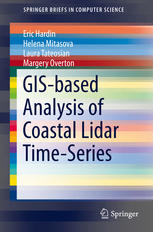

Most ebook files are in PDF format, so you can easily read them using various software such as Foxit Reader or directly on the Google Chrome browser.
Some ebook files are released by publishers in other formats such as .awz, .mobi, .epub, .fb2, etc. You may need to install specific software to read these formats on mobile/PC, such as Calibre.
Please read the tutorial at this link: https://ebookbell.com/faq
We offer FREE conversion to the popular formats you request; however, this may take some time. Therefore, right after payment, please email us, and we will try to provide the service as quickly as possible.
For some exceptional file formats or broken links (if any), please refrain from opening any disputes. Instead, email us first, and we will try to assist within a maximum of 6 hours.
EbookBell Team

4.7
36 reviewsThis SpringerBrief presents the principles, methods, and workflows for processing and analyzing coastal LiDAR data time-series. Robust methods for computing high resolution digital elevation models (DEMs) are introduced as well as raster-based metrics for assessment of topographic change. An innovative approach to feature extraction and measurement of feature migration is followed by methods for estimating volume change and sand redistribution mapping. Simple methods for potential storm impacts and inundation pattern analysis are also covered, along with visualization techniques to support analysis of coastal terrain feature and surface dynamics. Hands-on examples in GRASS GIS and python scripts are provided for each type of analysis and visualization using public LiDAR data time-series. GIS-based Analysis of Coastal Lidar Time-Series is ideal for professors and researchers in GIS and earth sciences. Advanced-level students interested in computer applications and engineering will also find this brief a valuable resource.